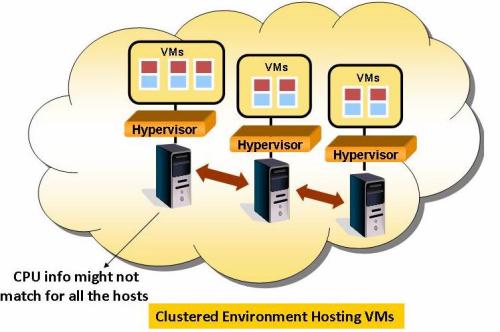Fingerprinting in Clustered VM Environments
The virtual infrastructure of an enterprise poses a different set of challenges beyond the realms of typical workstation virtualization.
CPU Info - Not the Best Choice for VM Clusters
Enterprise data centers often consist of virtual machine clusters for providing high availability failovers in the case of hardware downtime. Since the CPU info locking remains the same only across a line of processors, a locking mismatch is possible when virtual machines are migrated to a License Manager with differing CPU info. The resulting locking breakdown can jeopardize the disaster recovery setup, causing inconvenience to customers and loss of business.

Traditional Locking Criteria Strengthened Using UUID
At the same time, the problem of locking licenses to VMs in a cluster cannot be resolved by traditional locking criteria alone, like disk serial number and host name. Most of them do not exist on VMs or remain vulnerable to easy manipulation. To overcome this, use of UUID (Universally Unique Identifier)-based license locking is recommended. The UUID is a 16-byte (128-bit) unique number that identifies a virtual image in a virtual cluster. When combined with Mac address, host name, or IP address (static), their combination provides stronger license locking to VMs in a cluster.
NOTE The UUID locking criteria has been currently validated only on VMware ESX and ESXi clusters.
CAUTION! Manually changing the UUID will most likely cause the fingerprint to change, and prevent the application from accessing its license. Therefore, warn the system administrators that the UUID values should not be modified within a specific clustered or centrally managed setup.
